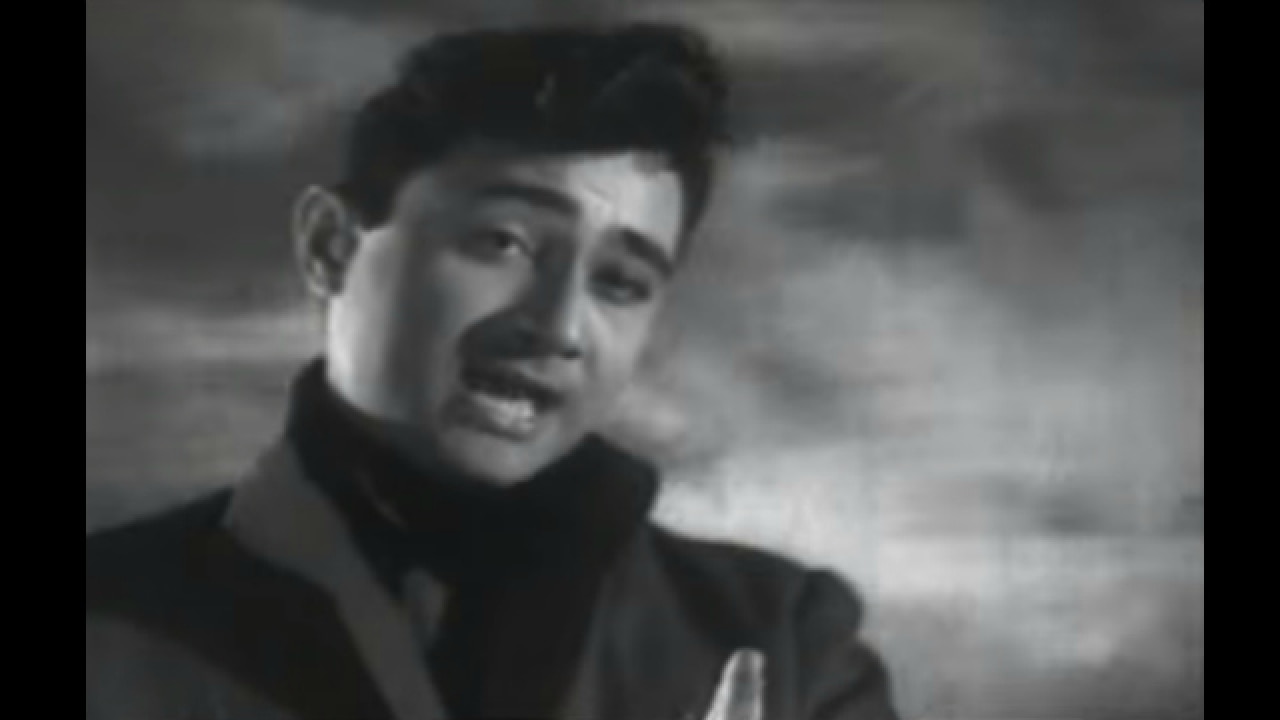
Dev Anand’s films were always known for their good music. Even when Anand didn’t produce or direct the film, the quality of the film’s soundtrack was never in doubt. Right from his early films such as Baazi (1951), Jaal (1952), Taxi Driver (1954), House No. 44 (1955), Munimji (1955), through to his later films like Hare Rama Hare Krishna (1971) or Banarasi Babu (1973), this aspect of Anand’s films is readily vindicated.
In 1961, Dev Anand had three such films with outstanding compositions. The first of these, Hum Dono, was directed by Amarjeet but produced by Anand’s Navketan banner, which the actor had launched along with his elder brother Chetan Anand. Hum Dono has songs which cover a wide spectrum of emotions. ‘Abhi Na Jao Chhodkar’ is charmingly romantic while ‘Kabhi Khud Pe Kabhi Haalaath Pe’ asks all kinds of existential questions. ‘Main Zindagi Ka Saath Nibhaata Chala Gaya’ brims with optimism even in the face of loss while the two bhajans ‘Allah Tero Naam’ and ‘Prabhu Tero Naam’ look to the Almighty to save the human race from death and destruction. In the upcoming episode of The Golden Years: 1950-1975, Javed Akhtar quotes the playback singer, Shankar Mahadevan, who believes that, “Hum Dono ranks among the finest albums ever made in Hindi cinema because it has a scintillating song for every mood.”
The other Dev Anand film with a fine soundtrack was the Nasir Husain-directed Jab Pyar Kisise Hota Hai. The film also marked Husain’s debut as producer. ‘Yeh Nigaahein Uff Yumma’ and ‘Sau Saal Pehley Mujhe Tumse Pyaar Thaa’ brought out the romance between the film’s protagonists. But there was also the wonderful ghazal ‘Teri Zulfon Se Rihayee Toh Nahin Maangi Thee’ that articulated Anand’s character’s heartbreak as Asha Parekh’s character tries to distance herself from him.
The title track of the film, ‘Jiya Ho, Jiya O Jiya Kuchh Bol Do’, was picturised most innovatively, with Dev Anand sitting on the top of a jeep which moves parallel to the train in which Asha Parekh is sitting. A lot of the songs of the late 1950s and through the 1960s have happy, romantic songs featuring the train. Another good train song from the same year, which was sung by Kishore Kumar was, ‘Main Hoon Jhum Jhum Jhum, Jhumroo’. Not only did Kumar act in the film alongside Madhubala but he also composed the film’s music. The other songs from Jhumroo which have lived on in public memory are: ‘Koi Humdum Na Raha’ and ‘Thandi Hawa Yeh Chandni Suhaani.’
But to return to Dev Anand, the actor had a third film in 1961 with some quality songs. Maya had Anand feature alongside Mala Sinha as the lead pair in the film. The Sinha-Anand duet, ‘Tasveer Teri Dil Mein’, from the film won over many admirers. But it was ‘Koi Soney Ke Dil Waaley’ which subtly reflected society values of that time. As Javed Akhtar notes, “The song could only be made because these were the society’s moral values of that time… There cannot be such a song today because now everyone chases wealth. Everyone aspires for materialism today. Nobody aspires for the simple things anymore. This song reminds us of a time when values were very different.”
Another film from the same year which underscored the importance of moral values and made a distinction between the path of righteousness and those who stray away from it, was Ganga Jamuna. Directed by Nitin Bose and written by the actor Dilip Kumar himself, Ganga Jamuna is a landmark film, having influenced several films thereafter, including Yash Chopra’s Deewar (1975). The film was made in colour and had many good songs, but the distinguishing feature of the soundtrack was that most of the songs were in Awadhi, which reflected and emphasised the film’s hinterland setting. Songs like ‘Nain Lad Jayee Hain Toh Manwa Maa Kasak Hoyee Be Karee’ and ‘Dhoondhon Dhoondhon Re Saajna’ became very popular with the masses. The one song, which was in Khadi boli or Hindustani, and different from the grammar of the other songs was ‘Insaaf Ki Dagar Pe’. As Akhtar points out, “This was the only song which was in Khadi boli or Hindi because it is being sung by the village school teacher. Now he cannot speak the local dialect. So he sings in this language.”
Watch the next episode of The Golden Years: 1950-1975 with Javed Akhtar this Sunday at 8 pm to know more about the many good Hindi film songs from 1961.